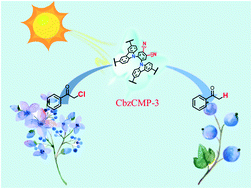Promoting charge separation in donor–acceptor conjugated microporous polymers via cyanation for the photocatalytic reductive dehalogenation of chlorides†
Abstract
Conjugated microporous polymers (CMPs) have emerged as promising heterogeneous photocatalysts for organic transformations owing to their structural designability and functional versatility. However, limited by the insufficient separation of the photo-generated excitons, their photocatalytic efficiency falls far short of expectations. Herein, we demonstrate a cyanation strategy to promote charge carrier separation in CMPs by selectively incorporating carbazole and cyano groups as electron-donating and electron-withdrawing units, respectively. The resulting CMPs feature π-extended donor (D)–acceptor (A) conjugation structures endowing them with distinct semiconducting properties, in which the efficient charge separation and transfer and wide visible-light absorption are facilitated. Compared to the cyano-free counterpart, the cyano-functionalized CMPs showed superior photocatalytic efficiency as exemplified by photocatalytic reductive dehalogenation of chlorides. More prominently, full recyclability of the designed CMPs as well as catalytic activity for at least ten runs without the loss of catalytic performance in photocatalytic reductive dehalogenation of chlorides demonstrated their robustness and sustainability.



 Please wait while we load your content...
Please wait while we load your content...